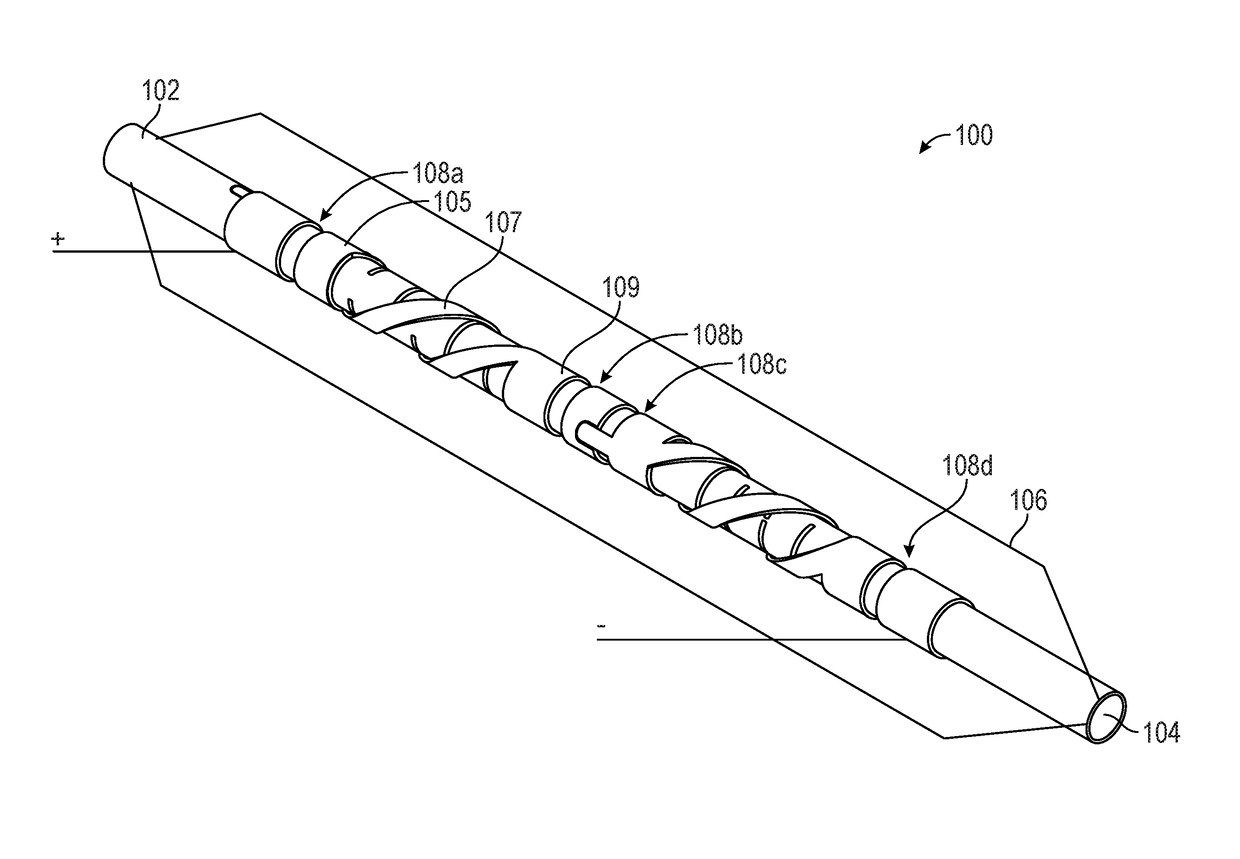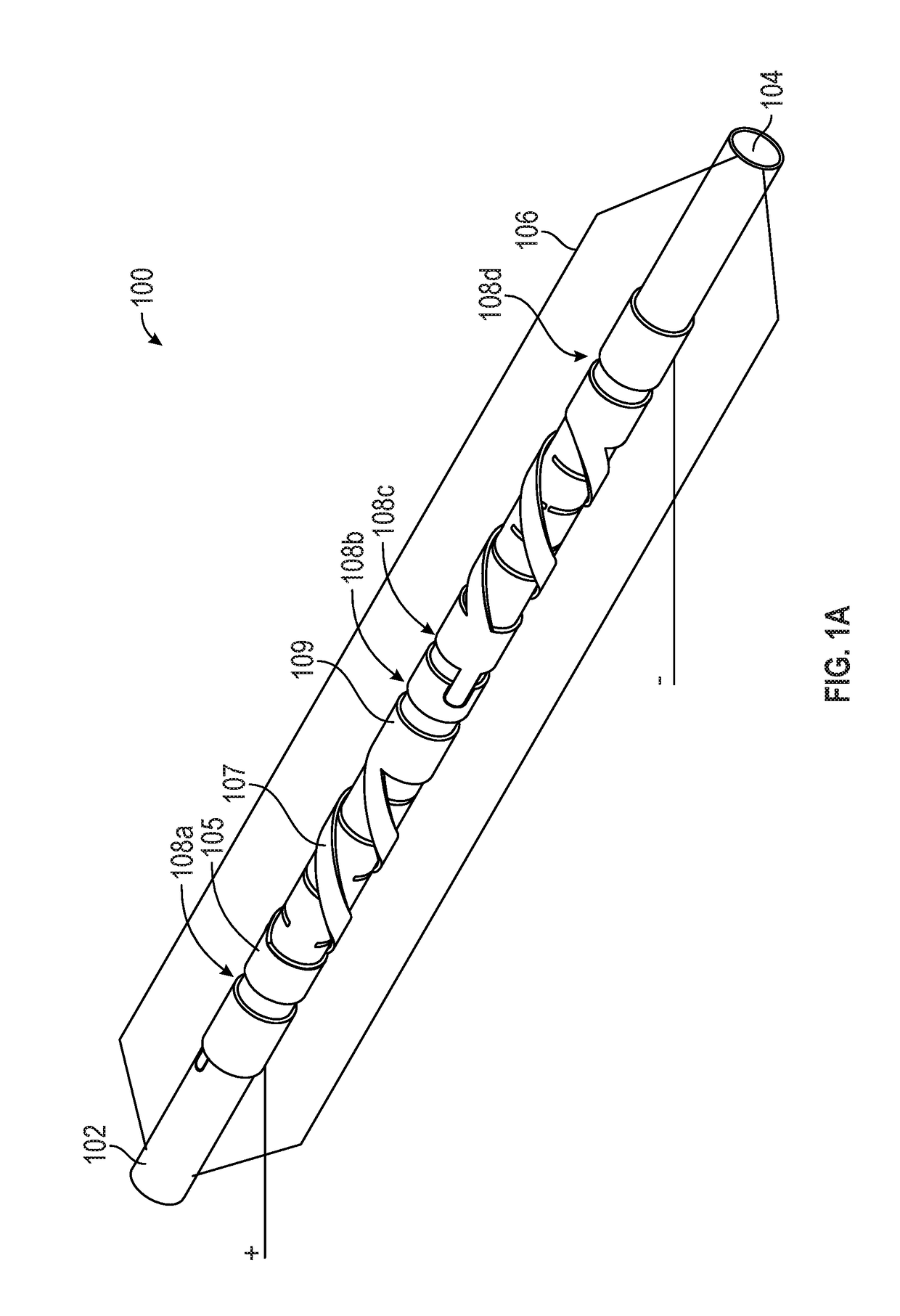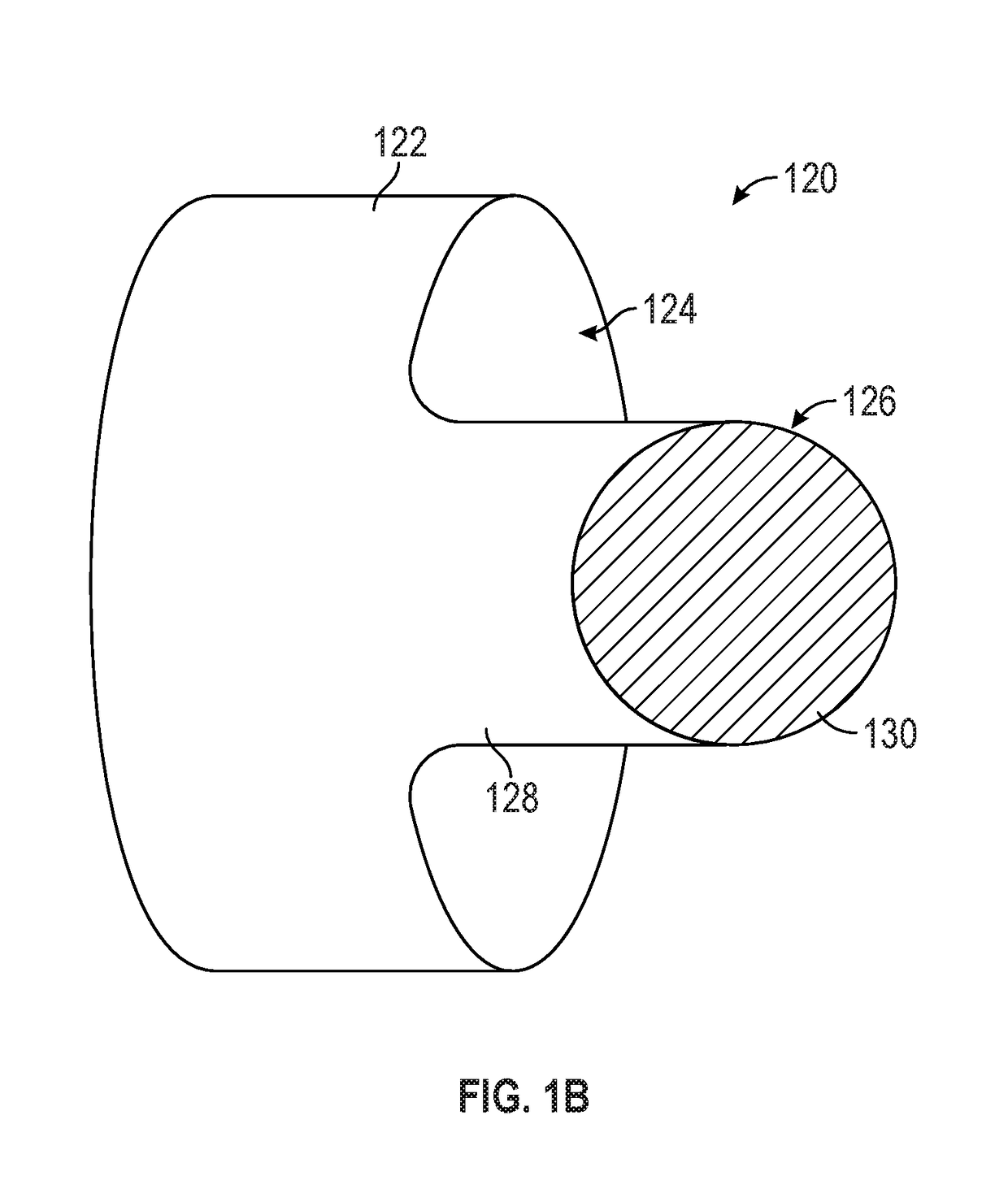Shock wave electrodes
a technology of shock wave and electrode, applied in the field of shock wave electrode, can solve the problems of high voltage applied across the inner wire and the outer cable, and achieve the effect of propagating away from the exposed tips
- Summary
- Abstract
- Description
- Claims
- Application Information
AI Technical Summary
Benefits of technology
Problems solved by technology
Method used
Image
Examples
Embodiment Construction
[0018]Described herein are electrodes for the generation of shock waves within vascular structures. One variation of a shock wave electrode pair comprises a first electrode that is circumferentially disposed over an outer surface of an elongate member and a second electrode also circumferentially disposed over the outer surface of the elongate member, where a spark gap may be formed at the narrowest separation distance between the two electrodes. The electrodes may be planar electrodes that are coplanar with each other (e.g., located along a single layer) over the outer surface of the elongate member (e.g., catheter). In some variations, the first electrode may have a recess (or protrusion) that corresponds with a protrusion (or groove) of the second electrode. The separation between the edge of the recess (or protrusion) of the first electrode and the edge of the protrusion (or recess) of the second electrode may be the shortest distance between the first and second electrodes, and...
PUM
 Login to View More
Login to View More Abstract
Description
Claims
Application Information
 Login to View More
Login to View More - R&D
- Intellectual Property
- Life Sciences
- Materials
- Tech Scout
- Unparalleled Data Quality
- Higher Quality Content
- 60% Fewer Hallucinations
Browse by: Latest US Patents, China's latest patents, Technical Efficacy Thesaurus, Application Domain, Technology Topic, Popular Technical Reports.
© 2025 PatSnap. All rights reserved.Legal|Privacy policy|Modern Slavery Act Transparency Statement|Sitemap|About US| Contact US: help@patsnap.com



